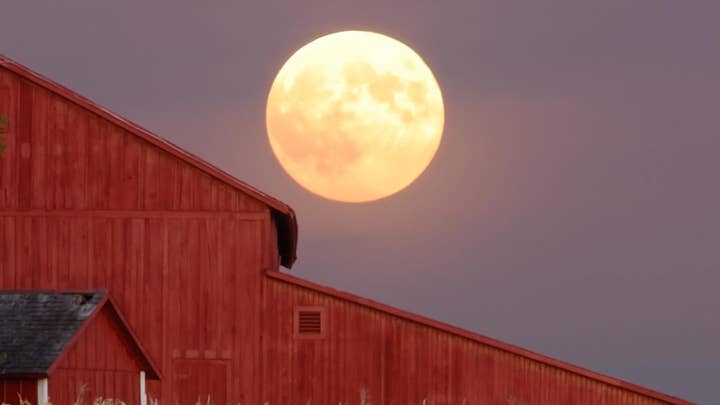'Strawberry Moon': June's sweet celestial event
June's full moon is a celestial event known as the 'Strawberry Moon' but why is it called that? Here's a hint, it has nothing to do with its color
The book of Genesis refers to the sun as the “greater light to govern the day” and the moon as the “lesser light to govern the night.” This month’s so-called Strawberry Moon, however, reminds us that in many significant ways we give greater attention and importance to the moon than the sun – and it shows in the dizzying number of nicknames we give it.
Wednesday night’s full moon is dubbed the Strawberry Moon because this is when strawberries are at their most plentiful. Even before the breeding of today’s popular cultivars, this has been true of wild strawberries throughout the ages.
Every month of the year, too, has full moons with cool, catchy sobriquets – just as do wedding anniversaries. Over many thousands of years, Native Americans and early Europeans coined the names, based on what was happening in their rural, northern-hemispheric world at the time.

The Strawberry Moon seen in 2017. (Gary Hershorn)
In January there’s the Wolf Moon, because in the dead of winter ravenous wolves on the prowl for food cry out at night.
In February there’s the Snow Moon, because that’s typically when the ground is most deeply covered with the white stuff.
In March there’s the Worm Moon, because in early spring the ground softens, inviting armies of robins to forage for earthworms.
In April there’s the Pink Moon, named after pink moss, a creeping wildflower in the phlox family whose tiny petals in early spring herald the coming flowering season.
In May there’s the Flower Moon, celebrating the month’s veritable explosion of colorful blossoms.
In June there’s the Strawberry Moon, AKA the Hot Moon, because the summer solstice – the longest day of the year – marks the start of summer heat.
In July there’s the Buck Moon, when male deer begin re-growing antlers, which they shed in winter.
In August there’s the Sturgeon Moon, when North America’s lakes, rivers, and coastal waters teem with the long, sleek, weighty fish – a staple in the early Native American diet.
In September there’s the well-known Harvest Moon, when the moon’s orbital dynamics make for an especially bright full moon – giving farmers extra light by which to harvest their crops.
In October there’s the Hunter’s Moon, whose extra-bright light makes it easier for hunters to stalk fatted game animals at night and thus store up provisions for the coming winter.
In November there’s the Beaver Moon, when trappers of old hastened to bag a winter’s worth of furs before ponds and swamps froze – and beavers themselves are busy shoring up their dams for the winter.
And finally, in December there’s the Cold Moon, when the winter solstice – the shortest day of the year (a day, ironically, I celebrate) – marks the start of the coldest season of the year.
As a kid growing up in East Los Angeles, I didn’t relate at all to these stories. My day-to-day world was concrete, asphalt, and traffic – not wolves, sturgeon, and beavers.
But now that my family and I choose to dwell in the countryside – we just purchased a small ranch in northern Texas and couldn’t be happier – my perspective in life has changed dramatically. Not just on the various full moons and the stories behind them, but on just about everything.
How could it not? Years ago, for instance, after watching wild strawberries gradually ripen amongst fields of wildflowers on our 1778 Massachusetts farmstead and then plucking them in June, at the peak of their sweetness – wow! – that’s when my taste buds first discovered what a truly special time of year this is. The time of the Strawberry Moon.
I will never willingly go back to living in a city. After all, God is said to have placed us in a garden, not an urban jungle. Every time I venture into a bustling metropolis – be it my native Los Angeles or London, or New York or Cairo – my stress levels shoot up and I feel horribly separated from the wonders of nature.
So, Thursday night – as I did last night – after the sun sets on the sweeping, picturesque landscape of northern Texas, I will step out my front door and – far away from city lights that pollute the night sky – I will gawk at the rising moon, mindful of the beauty of God’s creation and the extraordinary native people whose legacy deserves to be remembered and cherished for many, many moons to come.


